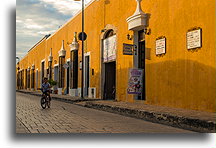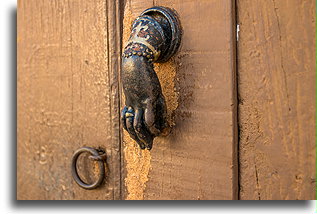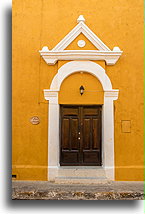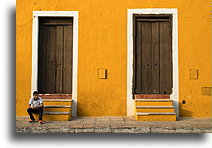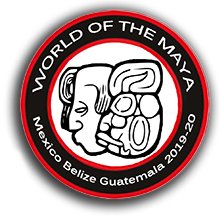The Yellow City
November 21-22
I was busy with car preparations when I heard a sound of an object falling to the ground. At the same moment, Eva began to scream. It felt like an electric shock in my body. I knew something went wrong.
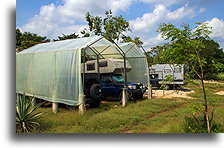
Last night we landed in Merida airport. It was a month already after we left. An hour taxi ride and we were back in Izamal Camping. I was wondering how our Jeep named Balios would respond to my request to start the engine. He was very obedient, after turning the key the engine hummed immediately. Since it was already dark, we decided to go to sleep and work on preparations for the trip in the morning. There is always a lot to do after a long absence. Full of energy we started work at the first light. The dry season begun and it was not so hot when compared to our last visit here. I thought everything was under control and we would be able to leave quickly until Eva shouted ‘mice!’ while dropping a big box on the ground. There was a mouse hideout between my wife's clothes. The mom-mouse was absent, but four just born tiny babes lay comfortably in between dresses, shirts, and skirts. It was a surprise for with a note of scariness. I even forgot to take any pictures. To get rid of rodents, I threw the contents of the box on the grass. The little ones scattered in no time, all that was left were my wife’s dresses with holes. She started to inform me “I’ll never put this on, throw it away, I won't even touch it.” Such a monolog lasted shorter than I thought, simply because I discovered another mouse hideout inside a car. This time mouse brought countless number of tissues from the distant end inside the vehicle, shredded them and deposited inside my OPC (On-board Personal Computer) in the location of traditional car stereo. The mouse also damaged the wiring inside the unit. Cleanup and repairs took us another several hours. Gosh, I have never expected rodents to live inside my car.
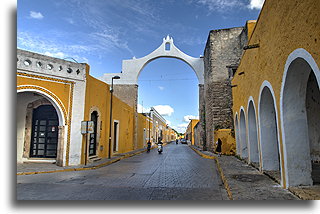
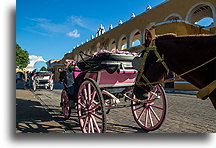
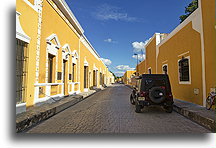
Izamal is a Spanish colonial city build during the conquest of Yucatan. The vast majority of buildings in this city are painted yellow; this is why Izamal is commonly known as the Yellow City. It is easily recognizable to any casual visitor; solid color distinguishes this city from many others in Middle America. However, Izamal is not on the mass tourism route. We decided to spend the rest of the afternoon walking its streets. We were here for the third time, so it would be a shame not to get to know this small town.
The well known in Izamal is the Franciscan Convent of San Antonio de Padua. Founded as a mission in 1549, it was built on the pre-existing big acropolis of the Maya city. From the information board we also learned that the convent’s atrium is considered the largest in both Americas and the second in the world after St. Peter's Square in Vatican. I wonder if it is true.
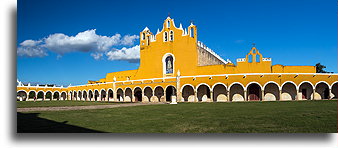
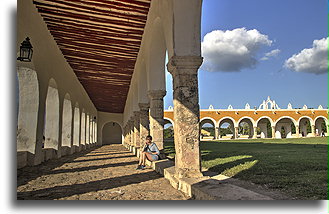
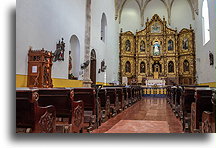
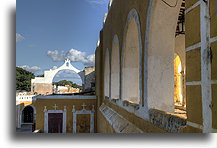
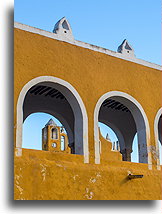
Strolling outside the Franciscan convent, we encountered several pre-Columbian structures. The largest was the remains of great pyramid dedicated to the Maya Sun god, the other one was the great temple, called Itzamatul. In the backyard of the old bakery, we also came across the ruins of the Kabal pyramid. While walking there we realized that Spanish colonial city was founded atop the existing Maya city and the modern name comes after ancient Itzamatul temple. The destruction of old Maya structures was huge here. We visited so many well-reconstructed Maya ancient cities before, why this one has been destroyed beyond possible reconstruction. The reason was simple. When the Spaniards first arrived, Izamal was an important Maya religious center and the Franciscans saw founding of a Christian mission in the exactly same location as a way to extirpate Maya original beliefs. At first, the missionaries wanted to demolish the largest structures in the city, but they realized that such task would take too much time and work. An alternative solution was to build a small Christian church at the top of the pyramid and at the same time use as much stone as possible from the Maya temples to build a monastery and residential buildings in the new city. Other cities such as Uxmal or Palenque were abandoned by the Maya centuries before the arrival of the Spaniards. This way they avoided destruction and demolition, because the inquisitors did not know about their existence.
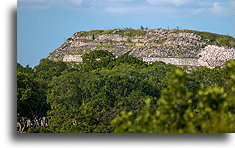
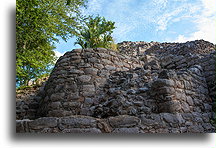
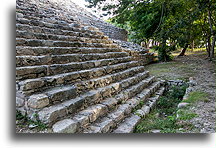
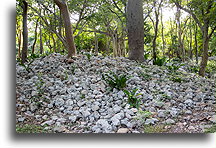
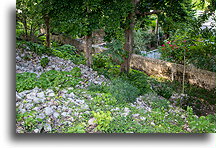
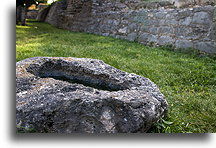
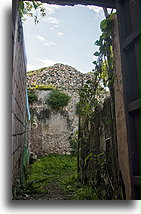
In 1549, the year when mission was founded, to Izamal arrived Franciscan friar Diego de Landa. This is a very important name to mention in the context of Maya Christianization. It was only a few years after the Spanish conquest of Yucatán and Landa was responsible for converting the Maya to Christian faith. In his actions on behalf of the church, he did not avoid physical abuse and torture. Several priest send a written complaint about his actions to the king of Spain. Landa's most significant order was the burning of 5,000 Maya-worshiped images and probably 27 Maya scripts written on bark paper, known as codices. Diego de Landa later wrote about this event, “We found a large number of books in these characters and, as they contained nothing in which were not to be seen as superstition and lies of the devil, we burned them all.” Actually, Maya folding books contained the written Maya history and their mathematical and astronomical knowledge. Out of hundreds if not thousands, only three Maya codices survived to this day.
